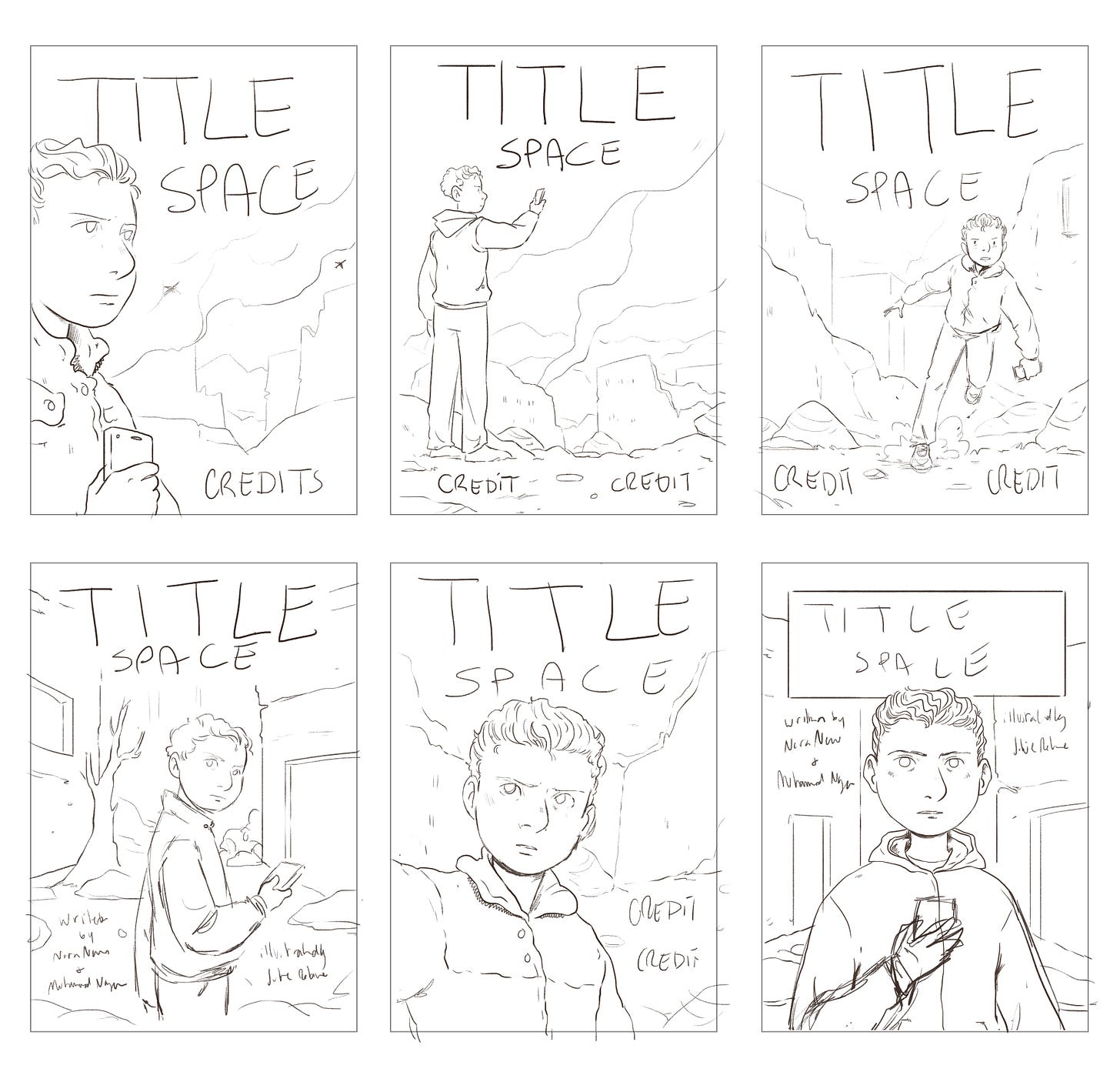The incredible Julie Robine illustrated my first book, Muhammad Najem, War Reporter. Her illustrations truly brought the story to life. Recently, we sat down to talk about her illustration process, and especially the process to designing the beautiful book cover. Here it is, lightly edited for readability!
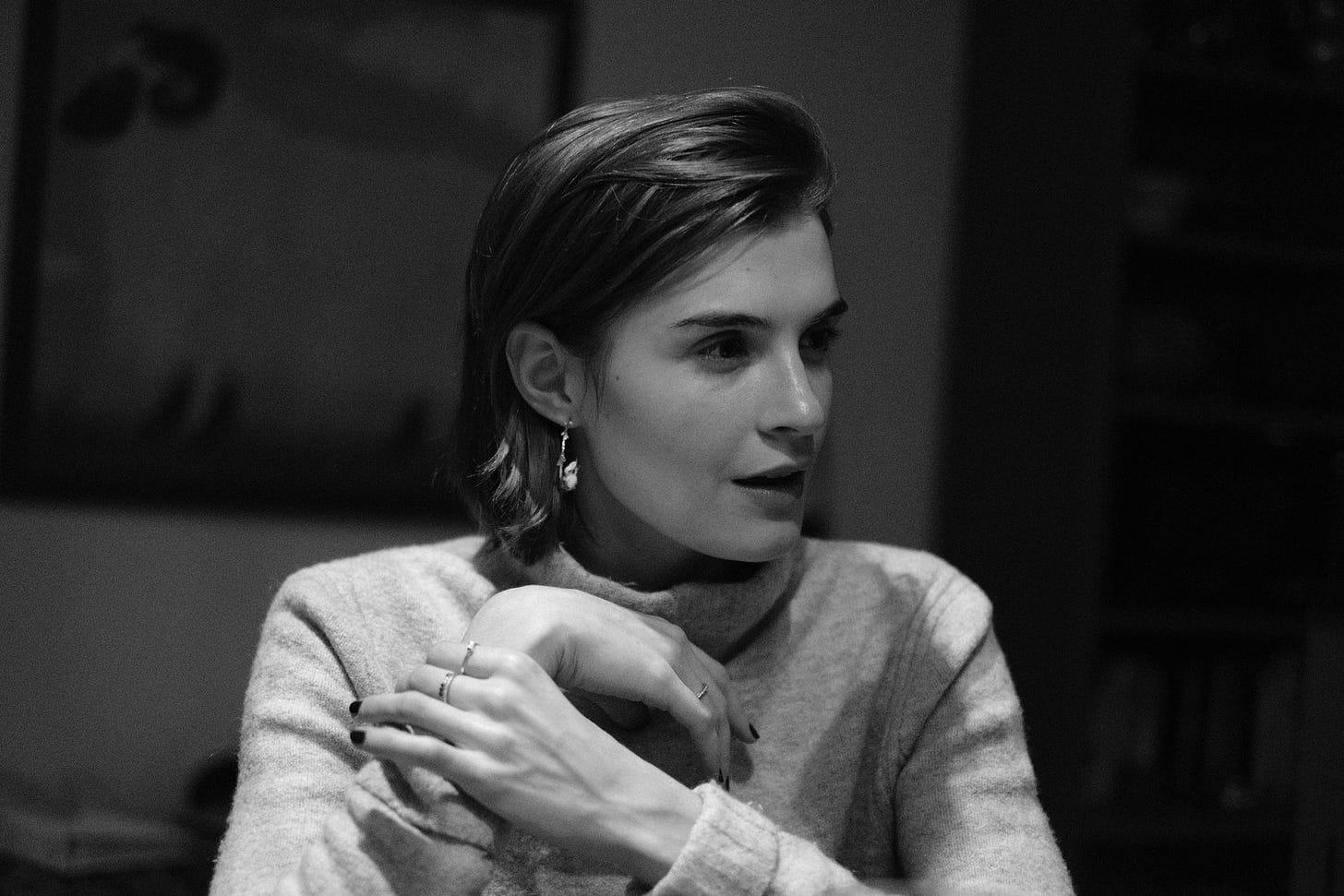
Nora: Hi! [Laughs] This is exciting!
Julie: Hi, yes!
Nora: I thought we’d start from the beginning: how did you first find out about this project?
Julie: So I got a phone call from my agent, Tanya [McKinnon], who had gotten a call from Andrea [Colvin] at Little, Brown, saying they’d been looking for an illustrator for this project for months, and I think since this was the fall of 2020 it was very hectic and chaotic, and they weren’t able to find anybody that they really liked. So they asked if I was willing to do a test with character design and a sample page or two. I was very excited and I was also so nervous!
Nora: The first we heard about you was when Andrea sent over samples from three artists. And I’ve heard this is pretty typical for other authors too, but Andrea basically said, Okay, here are three samples. We really like Julie and want you to pick her, but like, Here’s your options basically. [Laughs] But it was very clear from the very beginning. It wasn’t even closer. Part of it was the fact that you were able to capture both the depth and trauma of what was happening, but also the moments of lightness and fun. And I think having both of those qualities in this book was really important, especially being targeted to young readers.
Julie: Yeah, for sure. That was also like part of the reason why I was nervous. And that was something that I paid really close attention to: making sure that it didn’t feel exploitative in any way. There’s this terrible trope with Western media to depict anything happening in the Middle East with everything in sepia and everything is tragic and there’s just no humanity to it. And that was what I really wanted to avoid. I wanted it to feel like this was a life a child was living, that was completely normal.
Nora: Until it wasn’t.
And I’m so glad when you picked up on that too, because that was a huge goal of mine too: to show how beautiful Syria is in addition to the pain.
It is funny hearing your version of the story though, because the next thing I remember after the sample is we went back and we said, Yes, absolutely. We want Julie. And Andrea said something along the lines of, That’s great. We haven’t totally convinced her to take on this project yet. Cause she’s really scared. So we’re gonna go back to her and tell her that you guys really want her.
What were your concerns? What were you scared of?
Julie: Well, my concern was really manifold. I have no cultural tie to Syria or Islam and a really big concern of mine was not portraying Muhammad’s life with an artistic accuracy that it deserved. And the whole idea of, who do stories belong to? And I was just really, very concerned of putting my nose where it didn’t belong.
Nora: Me too! Me too, with writing the book.
Julie: I was so worried about just being disrespectful, not giving it the care and the treatment that it needed. And I remember telling all this to my agent and my agent—God bless her. She is truly wonderful— sat me down and was just like, I need you to understand that this is this young man’s life. He likes your work. You are basically telling him that he can’t have you on this project because of things he doesn’t care about. [Laughs] I was like, Yeah, you are correct.
So that really helped, and then I had a long conversation with my agent and with Andrea about the process, and the big one being that Muhammad would have complete creative control, to the extent that he was going to be telling me when things look wrong and that he knew he could say, at any point, This is terrible. Do it again.
Nora: Yeah and he had that same power with the writing too.
The collaboration was so incredible and such a great process and, I’ve heard, is pretty unique for this type of project. We went through every single level of sketches, of inks, of color. You know this better than I do from your day job [in publishing], but that kind of collaboration isn’t normal, right?
Julie: No, it’s not. I did a picture book before this and I didn’t talk to the author once during that process. And so I felt very much like I was kind of flying blind and it ended up working out because he liked the artwork. But for this, I just knew that there was no way I could work that way for something that’s autobiographical. I just needed it to feel like everybody had a hand in it and that they could ask me to redo things or do them differently or whatever. And it was like a safe space for everybody to really collaborate on the story in a way that made it as wonderful as it deserves to be.
Nora: I’m so spoiled now for future books! [Laughs]
Julie: [Laughs] Good, that’s what I wanna leave people with.
Nora: I wanted to ask you, these sketches that you just sent me for the cover are so cool and I’d never seen these. And they also speak to the collaboration here.
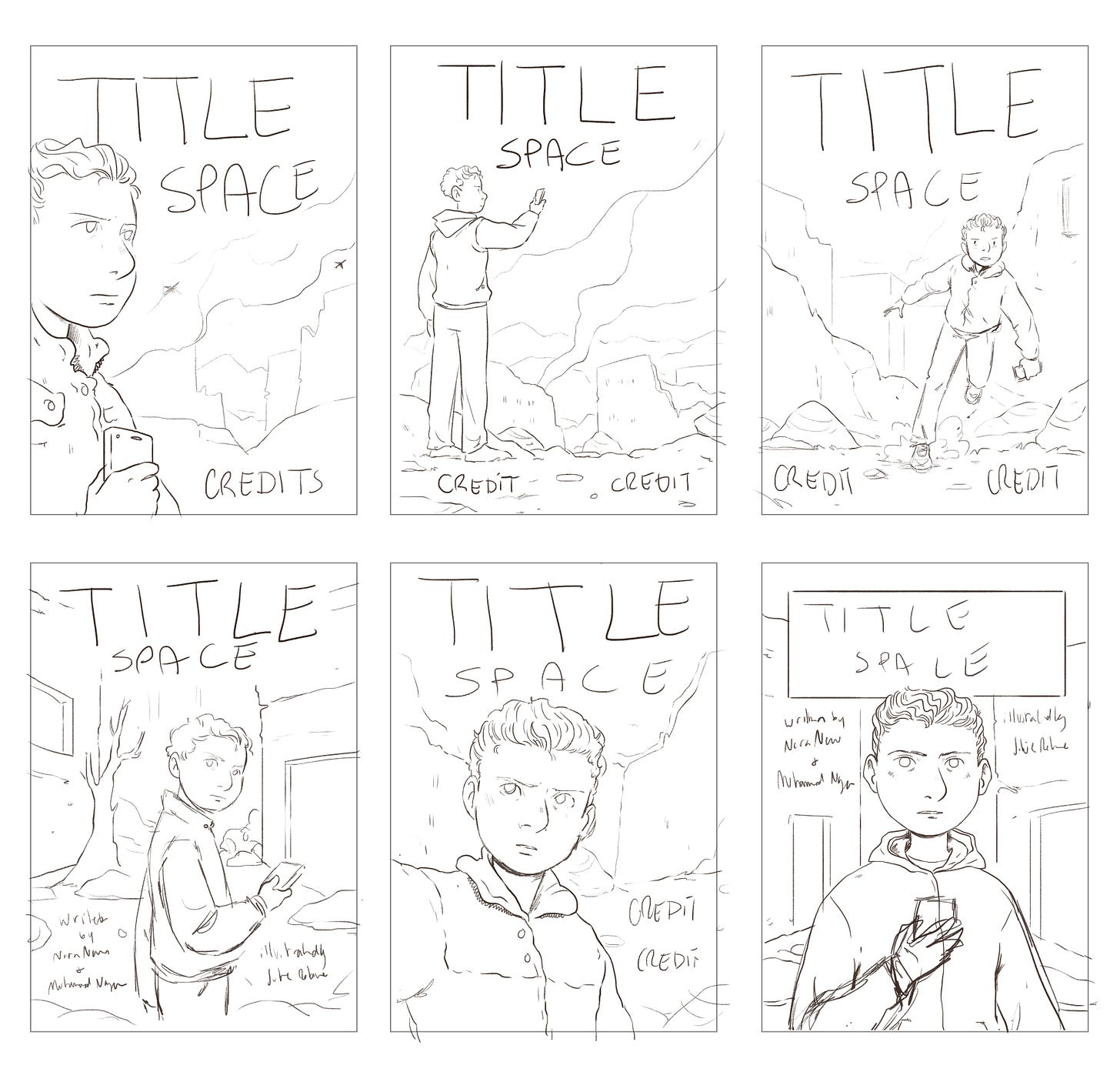
Julie: Yeah, they’re fun! I was given basically no direction, but that it had to leave room for the title and credits and had to show Muhammad around 15 years old with his phone. And so I just kind of ran with that. I kind of liked that first one, but he looks a little bit too pensive and it’s just a little too intense. They ended up liking number five, which is the center bottom row, but then they wanted to add the phone in.
Nora: And then I showed Muhammad the preliminary cover, which had a little fire off in the distance, and he had a good note.
Julie: [Laughs] That was so funny. Muhammad was like, It needs to be scarier. We want bigger explosions. And I remember we were like, Are you sure? That feels like a lot? And he was like, But that’s what it was like.
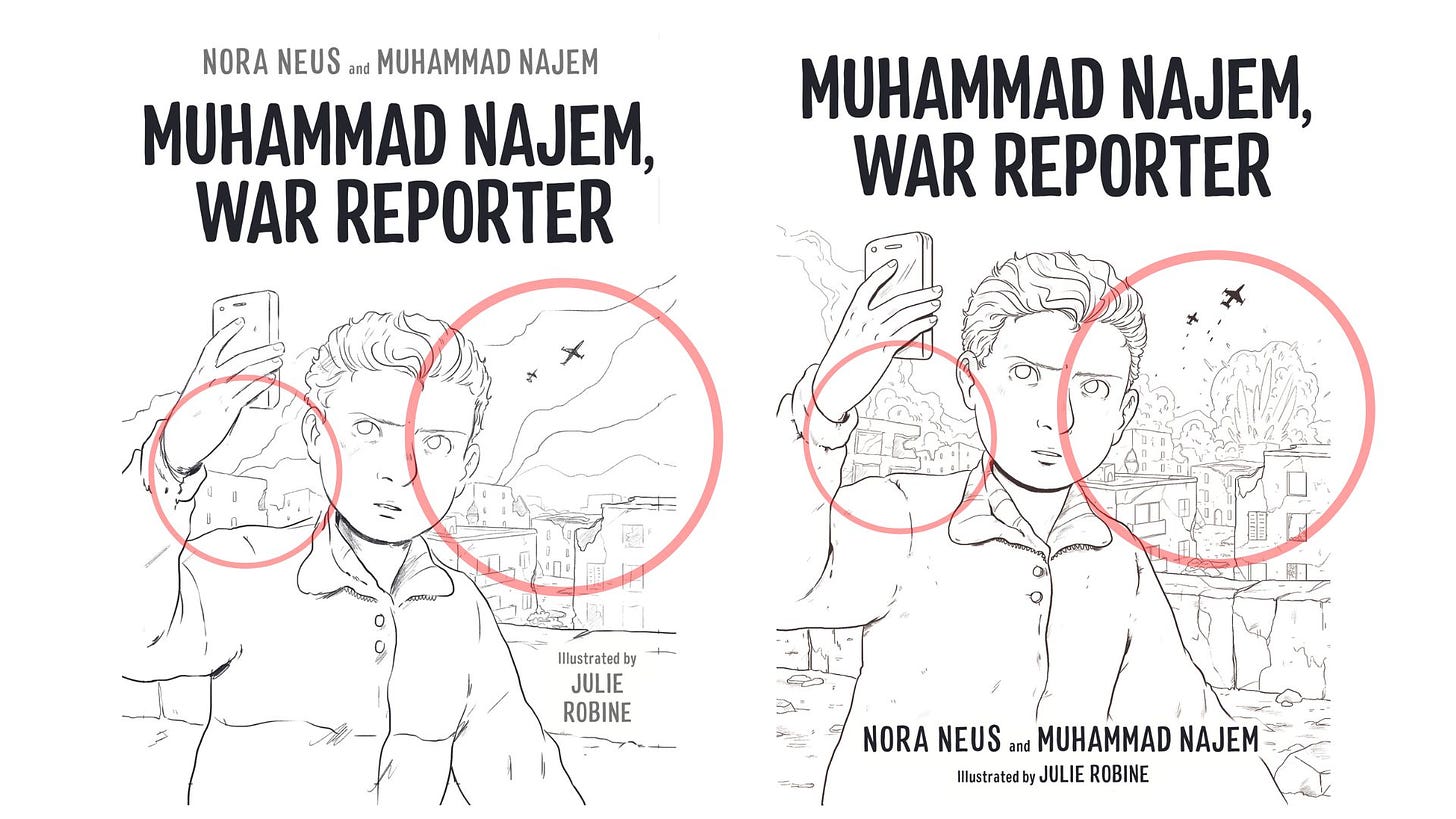
And he was correct!
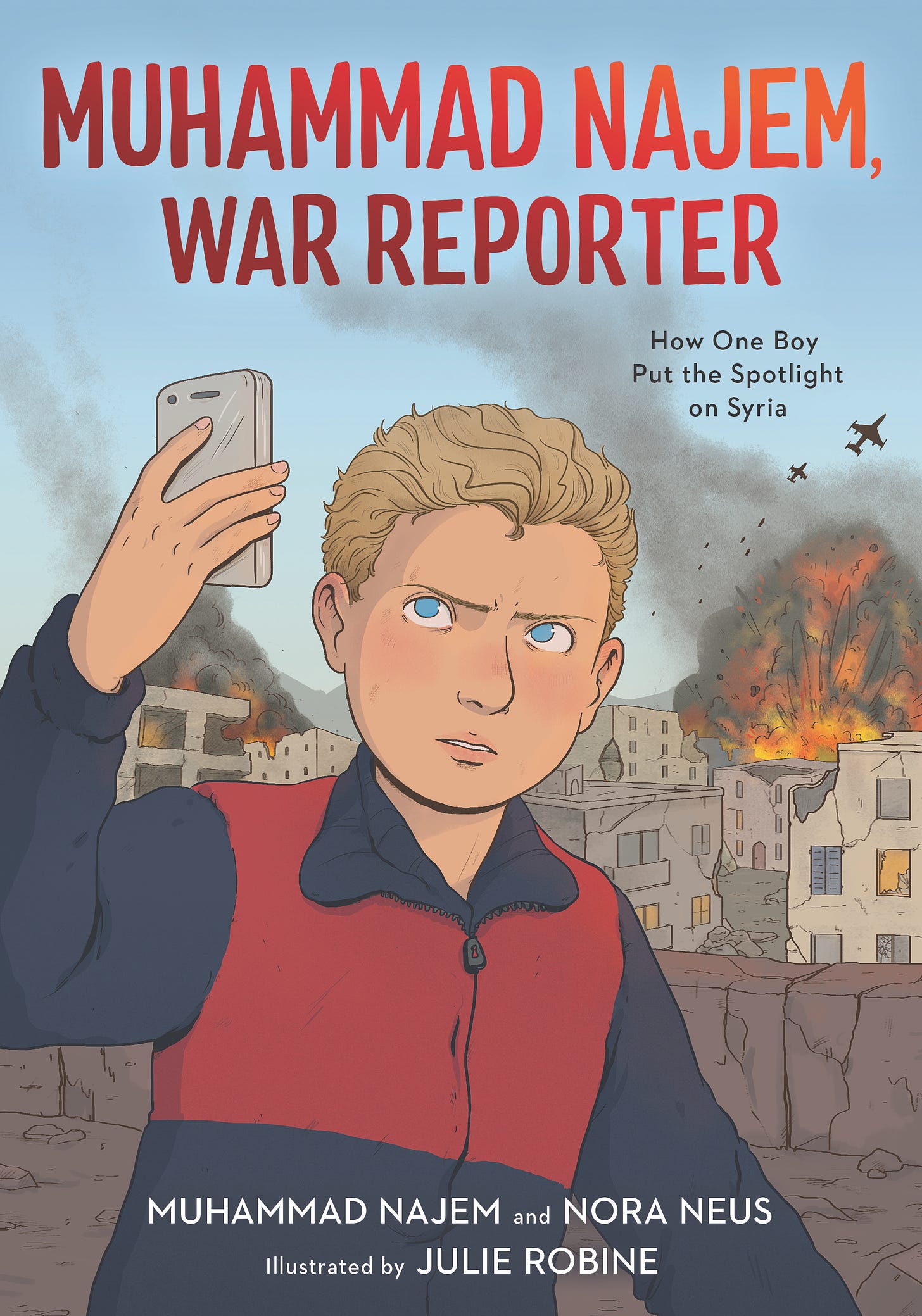
Nora: Well we are so grateful for you, and you and I have become great friends now! And we are working on another book together!
Julie: Yes!
Nora: In the words of the official announcement, STUNT GIRL is the story of the real-life historical figure Nell Nelson, one of the early undercover female journalists called stunt girls, who investigates working conditions in the garment factories of New York City in the summer of 1888, while also falling in love with real-life historical figure and queer icon Alice Austen, the first female street photographer.
It doesn’t come out until 2025, so we did sign up to be friends for at least that long, although I’m hoping much longer! [Laughs]
Julie: [Laughs]
Nora: You said something really funny the last time we were hanging out, it may have been at my birthday party. You said, Yeah, this book is gonna take a lot of detail work because it’s set in Victorian ballrooms with like crown moldings and like satin dresses!
Julie: [Laughs] There’s a lot of ruffles on every piece of clothing imaginable! And there’s horses and horses are like notoriously hard to draw.
Nora: Well I did put a lot of horses in this book, not knowing that.
Julie: No, no, it’ll be great.
Nora: Well thank you for letting me interview you!
Julie: Oh you’re so welcome, this was lovely.
Nora: There’s something nice about interviewing your friends! I’m learning things about you that I didn’t know! Now I want to go interview all my friends.
Julie: That’s what you should do next time at a casual hang. Like, So tell me what’s happening.
Nora: Oh yeah, I’d be fun to hang out with.
